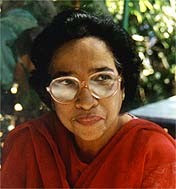 Ten miles away from the “dreaming spires” of Oxford, is the town of Woodstock, made famous by its Churchilian connections.
Ten miles away from the “dreaming spires” of Oxford, is the town of Woodstock, made famous by its Churchilian connections.Set among 2100 acres of greenery with a landscaped garden and terraced waterfalls, is Blenheim Palace, where Sir Winston Churchill was born prematurely on November 30th, 1874. Blenheim was never his home, though he visited there frequently. He even brought his fiancée Clementina Hozier here in 1900, and proposed to her in the Temple of Diana which overlooks a lake on the property, and has a romantic ambience.
In 1965, he was laid to rest alongside his parents’ grave, in the churchyard at Bladon.
But the story that lingers in my mind is not of Churchill but of Consuelo Vanderbilt, the 9th Duchess of Marlborough, whose enormous dowry saved Blenheim palace from disintegration.
This 17-year old American beauty was forced into a loveless marriage with the 9th Duke – Charles, Richard. John Spencer. She was deeply in love with another young man, but was wrenched away from him by her “socially climbing vulture of a mother.”
In those days, Americans greatly coveted British titles and aristocracy, and were more than willing to part with their millions, for entry into these elite circles. The English dukes and counts were notorious for their high living, philandering ways and sporting pursuits, which left them teetering on the edge of bankruptcy. They welcomed American girls both for their wealth and their charming personalities. Unlike the British women with their Victorian pruderies, these girls were witty, vivacious and attractive.
Consuelo and the Duke were married at St. Thomas Church, New York on 6th November, 1895. They were mismatched from the word ‘Go.’ She was beautiful, elegant and a good six feet tall to his five feet and seven inches. Though he went by the pet name ‘Sunny’ he was apathetic and brooding by nature. Just 23 years old, he too was very much in love with another girl. But due to financial exigencies, he was forced into this marriage.
And so the “dollar princess” crossed the Atlantic in a luxury liner, carrying with her a dowry of 2.5 million dollars for the repair of Blenheim Palace. Her father William K Vanderbilt was one of the wealthiest business magnates in USA. During her stay at the palace, Consuelo spent many more millions to renovate the “decrepit heap” that was Blenheim.
Though they stayed married for many years, it was a loveless existence. Consuelo made her dislike quite apparent in many ways, even to the extent of placing a massive centerpiece of Louis XIV on their dinner table, so that the Duke’s face would be blocked from her sight at mealtimes.
By her estimate, he was an inferior husband. She blamed it on his loveless upbringing first by nannies, and then by strict boarding school masters.
Consuelo’s son was born in 1897, two years after her marriage. Her second son came soon after, and with this, she considered her obligations complete.
“I have borne my husband an heir and a spare,” she said.
They were separated for 12 years from 1907 to 1919, but reunited briefly again, only to start divorce proceedings. The marriage was dissolved in 1921.
Blenheim Palace today owes its splendour to Consuelo, who lived the best years of her life in a ‘gilded cage.’
Though her contribution is rarely spoken about, people who knew her said she was kind and compassionate, and devoted her time and money to worthy causes.
She found true love in her second marriage to Lt. Col. Jacques Balsan, a French aviator, and lived for many years in Normandy. But the last few years of her life were spent in New York. She lived to a ripe old age of 87, during which time she penned her autobiography, “The Glitter and the Gold.”
Consuelo was interred in Bladon churchyard on the Blenheim Estate in 1964, as befitting the 9th Duchess of Marlborough. Forced arranged marriages do have the potential for misery especially when they hinge on the amount of dowry brought in by the brides.







